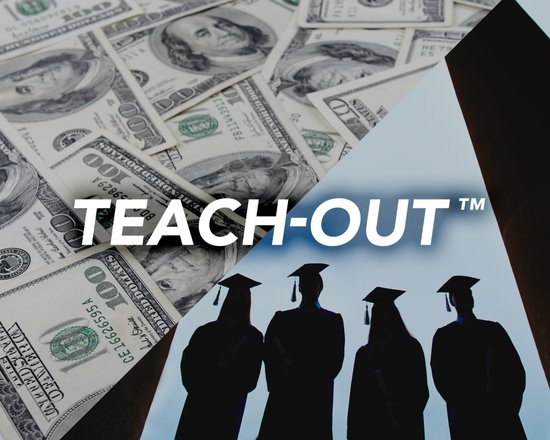
$1.7 Trillion Student Loan Debt, Options for Borrowers, and the Path Forward Explored in Teach-Out
Student Debt Crisis Teach-Out covers how higher education is funded in U.S., forgiveness and relief programs, and impacts on people’s financial, physical, and mental health
Sean Corp, Content Strategist
October saw the resumption of student loan payments across America after a multi-year, pandemic-induced pause. The current state of student loan debt in the U.S. stands at $1.75 trillion. In the past decade, student loan debt balances have increased 66%, according to the Federal Reserve. In the 2020-21 academic year, 54% of bachelor’s degree students graduated with student loans, with an average debt balance of $29,100, according to the College Board.
The Student Debt Crisis Teach-Out from the University of Michigan brings together experts from inside the university, other educational institutions, advocacy organizations, and private industry to explore the growth of student debt throughout history, how to manage student debt issues, and explore the complex network of loan repayment and loan forgiveness options available.
Teach-Outs are an online, interactive event series where global learners can come together on pressing issues facing society.
The Teach-Out details how higher education funding in the United States differs from other nations, and how conversations and potential policy around student loan reform have evolved over the years.
“Economically, it is fair to say that the student loan problem has become a crisis in America, and (the U.S. government is) actively seeking solutions,” said William Ellot, professor of Social Work.
“Student loans are something we should all be thinking about, and it is something that impacts tens of millions of Americans across the country,” he said.

Student Debt Crisis Teach-Out
Student loan debt in the United States has skyrocketed to over $1.75 trillion, and that number is only expected to grow as tuition costs increase. While working toward student…
The Teach-Out also features experts from the Gerald R. Ford School of Public Policy, the CATO Institute, The World Bank, and higher education institutions, including University of California-Irvine and Washtenaw Community College in Michigan.
The financial impacts are serious, but just as important are the health implications, said Terri Friedline, associate professor of Social Work, who is also featured in the Teach-Out.
“Loan debt creates a lot of anxiety, depression, and so not only are there implications of being able to afford rent, or buy a house or pay for groceries, but there is also a very real connection with physical health.”
This is especially true for those hardest hit by student loan debt – women, particularly black and brown women, Friedline said.
“When payments were paused, people were able to invest in themselves” from both a financial and physical and mental health perspective, Friedline said.
The Teach-Out also features the experiences of those dealing with student loans, for themselves and for their children. They share stories of the steps they took to navigate the student loan forgiveness program and to plan how to minimize debt as their children are about to begin college.
Four in 10 Americans believe student loan debt should be forgiven, including 72% with active student loans, and there are federal initiatives to forgive debt or drastically reduce federal loan debt for borrowers.
A recent Supreme Court decision blocked a broad-based federal plan to cancel up to $20,000 in student loans for borrowers, and now the federal government is exploring new options and canceling smaller pockets of federally held debt.
While resolving the current crisis requires a mix of debt forgiveness and relief, to get at the root causes, the U.S. needs to rethink the way it funds higher education, said Dalié Jiménez, a professor of law and director of the Student Loan Initiative at UC-Irvine.
“This is not the way we should support higher education. … We should care as a society, as a government about funding higher education in a way that would enable anybody who could do the work to attend, to improve, to learn,” Jiménez said.
To learn more about the Teach-Out and to enroll, visit the Student Debt Crisis Teach-Out page on Michigan Online.